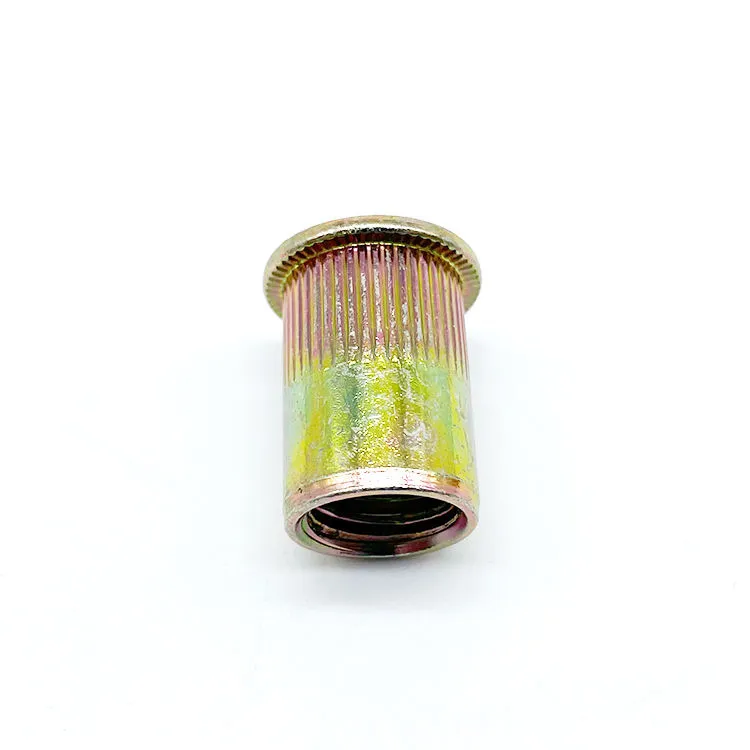

Different Types of Stud Bolts and Their Applications in Engineering
Des . 26, 2024 00:28 Back to list
Different Types of Stud Bolts and Their Applications in Engineering
Understanding Stud Bolt Types A Comprehensive Guide
In the world of engineering and construction, fasteners play a critical role in ensuring the integrity and stability of structures and machinery. Among various fasteners, stud bolts hold a unique position due to their versatility and strength. This article delves into the different types of stud bolts, their specifications, applications, and best practices for use.
What Are Stud Bolts?
Stud bolts are externally threaded fasteners, typically used with nuts. They consist of a cylindrical rod with threads that run along the entire length or often partially, allowing for a secure attachment to connected components. Unlike regular bolts, stud bolts do not have a head; this design feature enables them to be inserted into tight spaces and facilitates easier installation and removal.
Types of Stud Bolts
1. Fully Threaded Stud Bolts These are completely threaded from one end to the other. Their configuration allows for great flexibility in adjusting the length of engagement within nuts or other components. Fully threaded stud bolts are often found in applications requiring high tension and are preferred in industries such as oil and gas, shipbuilding, and construction.
2. Partially Threaded Stud Bolts These bolts have a section that is not threaded, typically at one end. The unthreaded portion allows for more effective load distribution and is beneficial in applications where grip strength is paramount. They are commonly used in flanged connections and high-pressure environments.
3. Double-End Stud Bolts As the name suggests, double-end studs have threads on both ends. This design is highly favorable for connecting two components that cannot be securely fastened with a standard bolt or screw. Typical applications include pipeline flanges and vessel head connections.
4. Serrated Stud Bolts These studs have serrations machined into the surface of their heads, providing enhanced grip, especially in high-vibration applications. They are ideal for use in automotive engines and machinery where stability under dynamic conditions is critical.
5. Hexagon Stud Bolts These come equipped with a hex-shaped head at one end and are typically used in applications where extra torque is needed for tightening. They can be used in conjunction with nuts and are often found in mechanical assemblies, structural support, and heavy machinery.
stud bolt types

6. Tension Control Bolts A more specialized type, tension control bolts are primarily used in steel constructions where precise tensioning is essential. They typically feature a particular design that allows for easy monitoring and adjustment of tension during installation.
Material and Coating Considerations
The material of stud bolts is critical for performance. Common materials include carbon steel, stainless steel, and alloy steel, with varying grades for strength and resistance to environmental factors. Additionally, the selection of coating—such as zinc plating or powder coating—can offer protection against corrosion, which is particularly important in harsh environments.
Applications of Stud Bolts
Stud bolts are ubiquitous in various sectors. They are crucial in
- Construction Used extensively in structural applications to join beams, columns, and other large components. - Oil and Gas Essential for creating secure connections in pipelines and drilling rigs where high pressures and loads are commonplace. - Automotive Utilized in engine assemblies and other critical components requiring secure fastening under vibration and high heat. - Marine Commonly found in shipbuilding and offshore platforms because of their ability to withstand harsh aquatic environments.
Best Practices for Installation
1. Proper Sizing Ensure the stud bolts are appropriately sized for the application, considering both length and diameter. 2. Torque Specifications Adhere to the manufacturer’s torque specifications to avoid over-tightening, which can lead to bolt failure. 3. Use of Washers Utilizing washers can help distribute load more evenly and reduce the risk of damage to surfaces. 4. Regular Inspection Periodic inspection and maintenance are essential to identify any signs of wear, corrosion, or failure in high-stress applications.
Conclusion
Stud bolts represent a vital component within the arsenal of fasteners employed in various engineering and construction applications. Understanding the different types, their specifications, and suitable applications is essential for any engineer or technician. By selecting the right type of stud bolt and following best practices for installation and maintenance, stakeholders can ensure the reliability and safety of their structures and machinery for years to come.
Latest news
-
Hot Dip Galvanized Bolts - Hebei Longze | High Strength, Corrosion Resistance
NewsAug.01,2025
-
High-Strength Hot Dip Galvanized Bolts - LongZe | Corrosion Resistance, Custom Sizes
NewsAug.01,2025
-
Best Self Tapping Screws for Drywall - Fast & Secure Installation
NewsJul.31,2025
-
High-Strength Hot Dip Galvanized Bolts-Hebei Longze|Corrosion Resistance&Customization
NewsJul.31,2025
-
Hot Dip Galvanized Bolts-Hebei Longze Metal Products|Corrosion Resistance&High Strength
NewsJul.31,2025
-
Hot Dip Galvanized Bolts-About LongZe|High Strength, Corrosion Resistance
NewsJul.30,2025

